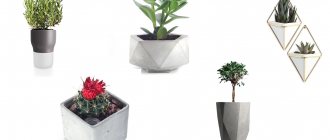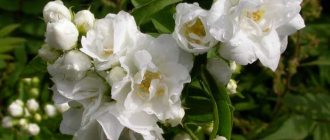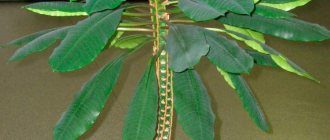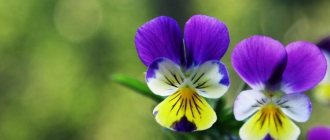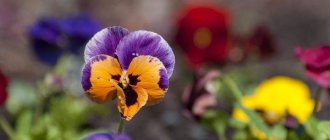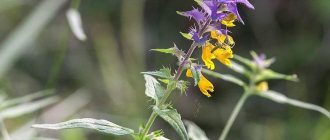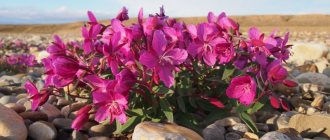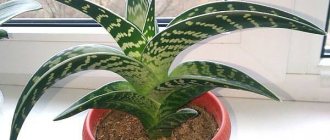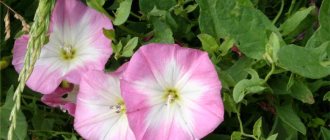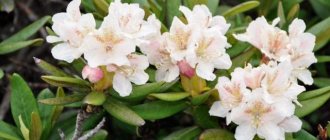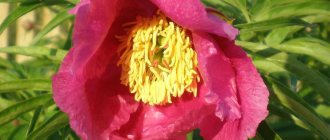If you love indoor plants, then you probably know that some of them can have a positive effect on a person’s well-being. In addition, indoor flowers with medicinal properties may have several other advantages:
- So, such plants absorb carbon dioxide and saturate the room with oxygen.
- Green residents of our apartment can also suppress electromagnetic waves and cleanse the premises of excess dust, harmful metals and toxins.
- Some types of houseplants are suitable for making cosmetics.
- According to popular beliefs, useful flowers on the windowsill can give their owners: financial well-being and happiness.
Medicinal pelargonium or geranium
The most common indoor plant is geranium. Flower growers love it for its beautiful flowers, ability to heal and purify indoor air.
The most healing geranium is considered to be the one that blooms in bright red bouquets.
Pelargonium is endowed with astringent, soothing, and anti-inflammatory properties. Her abilities are known:
- normalize heart function;
- provide assistance in the treatment of acute and chronic gastrointestinal diseases;
- relieve pain from stomach and duodenal ulcers;
- help in the treatment of gastritis;
- get rid of dermatitis, boils, ulcers, carbuncles in the form of lotions and compresses.
Medicinal decoction of geranium
- 1 tbsp. Brew a spoonful of leaves or rhizomes of a houseplant with a cup of boiling water,
- keep in a water bath for 5-7 minutes,
- strain while hot through 3 layers of gauze,
- squeeze, then add water to the initial volume.
Drink 1 tbsp. l. three times a day a quarter of an hour before meals. To get rid of external problems, the broth is diluted with water 2 times.
From pressure
A treated infusion of the plant's roots is most often drunk to lower blood pressure and solve problems of the heart and blood vessels.
Geranium with honey
For pleurisy, you can simply chew 2-3 young geranium leaves twice a day, eating 1 tbsp. l. honey 30 minutes before meals.
The plant secretes such strong substances that it kills streptococci and staphylococci, and also has a calming effect, relieving stress and insomnia. Therefore, the best place for him is the bedroom.
Flower doctors
However, not only medicinal plants in the generally accepted sense of the word can be included in your home medicine cabinet. Even familiar indoor flowers, the healing properties of which you may not have even suspected until today, will help you cope with some problems.
Aloe
The healing properties of my grandmother’s unpretentious “agave” have been known to the world for thousands of years!
In official medicine, aloe-based preparations are successfully used in gastroenterology, ophthalmology, and cosmetology. Traditional medicine is not far behind. Aloe leaf juice has anti-inflammatory and bactericidal properties. The pulp of the leaves mixed with honey is a well-known tonic and stimulant. The juice, diluted with water, is dropped into the nose for a runny nose, applied to ulcers, burns and small wounds to heal them, smeared on the temples to reduce headaches, and taken orally as a laxative and choleretic.
You need to be especially careful when taking aloe juice internally - there is a high risk of poisoning, do not overdo it!
Geranium (pelargonium)
For some, the bright scent of geranium, another common inhabitant of window sills, can only cause a headache, but for others it is a guaranteed sedative. Many never tire of admiring the other healing properties of the plant. Geranium oil is actively used in cosmetology as an anti-inflammatory, soothing and even rejuvenating agent.
A paste of fresh herbs applied to the places where the pulse is felt helps lower blood pressure, and placed at the site of pain relieves attacks of radiculitis and osteochondrosis. Infusions and decoctions of geranium are used as a remedy for constipation, insomnia, and even to prevent epileptic seizures.
Hibiscus (Chinese rose)
Large and bright hibiscus flowers undoubtedly delight the eye of any gardener. Have you tried tea from this ornamental plant?
Yes, yes, this is the same famous hibiscus. Try it - it’s not only tasty and unusual, but also very healthy. Anthocyanins, flavonoids, ascorbic acid, phytoncides - there are a lot of substances important for the body. Hibiscus tea improves metabolism, is useful for low blood pressure and immunity, it strengthens blood vessels, and is very useful for gastrointestinal disorders. In addition to tea, you can prepare various infusions based on hibiscus, which are used in folk medicine as laxatives and drugs for worms.
Kalanchoe Daigremont
This plant is sometimes called the “doctor of life” and for good reason! In everyday life, its juice, green gruel and infusions, due to the abundance of biologically active substances, are used in the treatment of many diseases.
Thus, the juice is successfully used to combat runny nose and colds, otitis media, dermatitis, burns, stomatitis, and mastitis. An infusion of fresh leaves is useful for varicose veins. It is taken orally for tuberculosis, inflammation of the gastrointestinal tract, and some gynecological diseases.
Conditioning plants
This list includes indoor plants that help clean and disinfect the air in your apartment. Get them - it will become easier for you to breathe, headaches will disappear, and your sleep will become more sound.
Want to check it out? So, write down and plant:
- Sansevieria;
- aloe;
- chlorophytum;
- dracaena;
- lemon;
- ficus;
- rosemary;
- asparagus.
Pike tail
Another popular plant that is loved for its unpretentiousness is Sansevieria. It also has such unusual names as “mother-in-law’s tongue” and “pike tail”.
This humble indoor flower has rare medicinal properties, such as resisting adverse conditions. Therefore, during the rampant flu and other infectious diseases, mother-in-law’s tongue increases the resistance of the inhabitants of the house to all viruses.
Tincture recipe
The medicinal tincture is useful for inflammation of the appendages. To prepare it:
- Fill 1/3 cup with finely chopped sansevieria leaves;
- add vodka to the brim, pour into a container with dark glass;
- let it brew for 21 days in the refrigerator;
- strain through 3 layers of gauze, then store in the same bottle.
Take 1 tbsp. morning and evening after meals. Course – 14 days.
Homemade medicinal plants
Aloe
Aloe is a houseplant, a resident of South Africa, familiar to us with its fleshy leaves, which our grandmothers put on our knees when we were children when we had abrasions.
The use of aloe in folk medicine has long been used for neuroses, inflammatory diseases of the female genital organs, asthenic conditions, as well as after infectious diseases.
Healing recipes with aloe
It is also possible to use aloe for bronchitis. To do this, we will prepare the mixture we need, consisting of 15 grams of aloe juice, 100 grams of lard, 100 grams of butter and 100 grams of honey. The ingredients should be thoroughly mixed and slightly reheated before use. Take one tablespoon of our medicine in a glass of hot milk twice a day.
For long-term non-healing wounds, ulcers and fistulas, take aloe juice and honey in equal proportions and mix, add one tablespoon of alcohol (96%) per glass of the mixture and mix thoroughly again. The ointment should be stored in the refrigerator. Apply to affected areas 2-3 times a day.
For gastritis, constipation and severe flatulence, mix equal parts of aloe juice and honey. You need to take one teaspoon three times a day before meals.
Geranium
Indoor geranium, often called pelargonium, is a plant with leaves bordered with a white or brownish border. The plant secretes active biological substances that kill staphylococci and streptococci.
Just by inhaling the healing compounds of geranium leaves, a person calms down, which is a very important point for insomnia, neuroses and stress.
In folk medicine, geranium infusion is used as:
- anti-inflammatory;
- pain reliever;
- antiseptic;
- hemostatic agent.
Applications of geranium
- For otitis: mash the leaf and put it in the ear.
- For toothache: hold a geranium leaf behind your cheek. Contraindicated for children and pregnant women.
- For radiculitis: crush the leaves and apply to the sore spot overnight.
- For high blood pressure: apply a freshly picked geranium leaf to the pulse on your wrists.
Adiantum (Venus hair)
Venus hair or adiantum is an indoor plant that moved into our homes from tropical and subtropical regions and areas of Asia and America. The flower also has a second well-known name - “female fern”.
The first mentions of the medicinal properties of the plant were found among ancient Greek and Roman doctors. The collection of rhizomes and leaves of Venus hair is usually carried out in late summer or early autumn. The plant is used for external use fresh or dried. In dry form, storage is carried out in a dry and dark place.
Recipes
- For furunculosis: fresh crushed leaves are applied to the boil as a compress.
- A decoction of leaves and rhizomes is used to gargle and also against dandruff.
- For severe coughs, it is taken orally and is a very good expectorant.
Hibiscus (Chinese rose)
Hibiscus is a Chinese rose, its homeland is Northern India and China. Chinese rose is a very popular indoor plant. Hibiscus flowers are used as an anticonvulsant, bactericidal, diuretic and choleretic agent.
Used for cuts to stop bleeding. Lotions made from soaked flowers treat skin inflammation and weeping eczema.
Recipe. For carbuncles, fistulas, juvenile acne and wounds that do not heal for a long time: take fresh leaves and flowers of hibiscus, grind everything thoroughly until smooth, and apply to problem areas for several hours.
Kalanchoe
This medicinal plant came to our windowsills from the distant island of Madagascar.
Interesting! Many of the plant’s healing capabilities were discovered by the German philosopher and poet Goethe, which is why in Europe Kalanchoe bears the second name “Goethe’s tree.”
The plant has anti-inflammatory, bactericidal, early healing and blood-stopping properties.
The juice of the plant can be used in the treatment of purulent wounds, boils, erysipelas and in complex therapy. A special antiviral component has been isolated from Kalanchoe juice, which helps fight polio and influenza viruses. In ophthalmology, the juice of the plant is very effective in the treatment of burns, injuries, and corneal erosions.
Application and recipes
- For a runny nose and to prevent flu: two drops of Kalanchoe juice in the nose two to three times a day.
- For burns, diathesis, purulent wounds, cut off fresh leaves of the plant, chop and apply the pulp to the wound.
- For cracked nipples in a nursing mother: a few drops of juice on the nipple after feeding. Perform the procedure within six days.
- To heal wounds and bruises: cut the leaves of the flower lengthwise and apply the fresh cut to the wound.
Golden mustache (Kallisia)
Golden mustache or “callisia” came to us from the tropical and subtropical forests of South America more than a hundred years ago as a simple, ornamental plant. But studies have shown that golden mustache is a powerful biostimulant.
The plant is able to increase the intensity of metabolic processes, stimulate vitality and help activate cells of the immune system.
Application
The plant is used in the treatment of acute and chronic bronchitis, pneumonia, diabetes, gallstone and kidney stone diseases, asthma and tuberculosis. Golden mustache is also used as a means of preventing influenza and colds. In the form of a compress it is indicated for rheumatism. It is very important to know that to prepare medicine, you need to take a flower that has grown at least twelve knees on its side shoots.
Recipe . For furunculosis and arthritis: grind fresh leaves to a paste and apply to sore areas as a local application.
Common ivy (Hedera)
An inconspicuous and widely known vine has a substance that relieves spasms and expectorant properties. Surprisingly, beneficial substances are found in all parts of the plant. Saponins and steroids are contained in flowers, essential oils, flavonoids, galactose - in fruits.
The anti-spasm substance contains wood. It is used in medicines for cough and bronchitis. Many medicines contain ivy extract. The plant can relieve inflammation and heal wounds.
Recipes
Cholelithiasis
Take two tbsp. spoons of dry (fresh) crushed leaves and pour ½ liter. white wine. Leave for a day, shaking periodically. Take 1 tbsp before meals (3 times).
Decoction of leaves (bark)
The crushed bark (1 tablespoon) is poured with boiling water (1 glass), kept in a water bath for thirty minutes. Cool, filter, adding boiled water to the initial volume. Take 2-3 times a day, 1 tbsp. l. at:
- prolonged cough (chronic or acute bronchitis);
- inflammation of the digestive system (acute gastritis, colitis, enteritis);
- inflammation of the genital organs and leucorrhoea (douching);
- skin diseases (used internally and externally);
- pediculosis and scabies.
Cyperus
In alternative medicine, the cyperus plant is used to treat colds and skin diseases. The spectrum of action of the plant is wide, it is used for:
- Restoring the cycle during menstruation.
- Stimulates digestion.
- Improves blood circulation.
- Memory restoration.
- Fighting insomnia, headaches.
- Increased sexual desire.
- Pain relief.
For stomach pain, take fresh chopped tubers (1 tbsp) and brew 250 g. hot water. They insist for an hour and strain. Take one tablespoon three times a day.
Aucuba japonica
Aucuba japonica is a houseplant that has medicinal qualities and is used in the treatment of wounds, bruises, frostbite, and burns. Substances that allow tissue regeneration and treat inflammation are contained in the leaves.
Not only the leaves, but also the fruits are medicinal. Japanese doctors use preparations prepared from the plant for intestinal and stomach diseases and tumors.
Recipes
To treat wounds, the fruits (50 grams) are crushed in a blender, applied to a gauze pad and applied to the wounds.
The following recipe is also used:
- 1 tbsp. l. fruits crushed into pulp;
- 1 tbsp. l. aloe.
The ingredients are mixed and applied to the edges of the wounds. Then they bandage it. When using both recipes, the dressings are changed twice a day.
In case of frostbite, take a fresh leaf of aucuba, wash it and apply it to the frostbitten (burnt) area. After 1.0-1.5 hours, the sheet is replaced with a fresh one.
Myrtle
The plant has a very wide range of medicinal properties. In folk medicine, the plant is used for the prevention and treatment of influenza, cancer, asthma, tuberculosis, heart disease, epilepsy, dysbacteriosis, and hemorrhoids.
Myrtle is popular as a medicinal plant due to its excellent phytoncidal, bactericidal, and immunostimulating properties. I would especially like to note that the plant is an anti-allergen.
Today there are a large number of different types of allergies and often myrtle helps get rid of not only current but also chronic allergies. The mild effect of the plant on the body allows it to be used for children with allergies if antibiotics are contraindicated.
The medicinal properties of myrtle are the essential oils contained in the leaves. The main essential oil is eugenol, which has bactericidal properties. In addition to oils, the plant is rich in myrtilin, a polyphenolic substance with anti-cancer and immunomodulatory effects.
Recipes
For the treatment of oncology. For 3 to 15 months, take 0.5-1.0 tsp. leaf powder as a seasoning.
Caries, periodontal disease, and oral diseases are treated by daily rinsing with myrtle tincture. Prepare a tincture with water or vodka. Five myrtle leaves are ground in water, pour 1 tbsp. l. boiling water
If you use this tincture internally, you can stop vision loss. The infusion can be instilled into the eyes during inflammatory processes.
Tradescantia
The medicinal properties of tradescantia for problems with the gastrointestinal tract, sore throats, colds, even tuberculosis are well known.
The recipe for making the tincture is the same as described above. Drink 50 ml of tincture every 2 hours, diluting with the same amount of water before meals.
If you develop periodontal disease, chew the leaves of this plant and rub its juice into your gums.
For hematomas, cuts, and scratches, apply fresh Tradescantia greens to the sore spot.
Medicinal plants on the windowsill
Pharmacy on the windowsill - homemade medicinal plants, sometimes invisible and ordinary, living next to us. They are familiar to us from childhood and have wonderful healing properties. Now we will talk in more detail about these amazing healers, and also look at photos of medicinal house plants.
We are so used to using all sorts of medications and for any trifle we immediately run to the pharmacy. Without thinking at all that tablets and pills treat one thing, but have a negative effect on another. But this is convenient, you say. Let's think together about how to make it not harmful and convenient. Yes, of course, I mean herbal medicine.
We can use the healing properties of plants that have become so familiar to us for health. Let's talk about the medicinal qualities of house plants and let each of us draw a conclusion for ourselves on the use of the capabilities and healing properties of green healers. Let's consider several plants known to us since childhood.
Ficus
Ficus is considered one of the most useful indoor plants. This unpretentious flower perfectly purifies the air in the apartment and treats a huge number of diseases.
Compress
To prepare a decoction for a compress, first boil the greens for 3 minutes, brush with honey, tie on your back and chest, secure well, tie a scarf on top, and leave the compress overnight.
Ficus tincture
The medicinal tincture very well treats arthritis, radiculitis and osteochondrosis:
- pass the ficus leaf through a meat grinder,
- pour 100 ml of vodka,
- keep in the refrigerator for 2 weeks.
- filter through 2 layers of gauze, pour into a container with dark glass.
Warm in hot water before use.
Before going to bed, take a bath (39 degrees) with the addition of 200 g of salt, then rub the sore spot with tincture of indoor ficus, wrap yourself in a warm scarf. Course - 10 days.
Juice and vinegar
Warts and wen will disappear if you add 50 g of vinegar essence to 100 g of ficus juice. Make a hole in the patch, stick it to the wart, drop 2-3 drops of the mixture into the hole where the wart is peeking out.
The burning will begin immediately. If the burning sensation can be tolerated, then hold it for 10-12 seconds. If it burns very strongly, rinse quickly with water.
The Best Healthy Houseplants for Your Home
Among the huge number of plants grown indoors, it is necessary to be able to distinguish those that are useful from those that can harm humans and make the right choice.
Chlorophytum
Chlorophytum is an unpretentious flower that can grow both in the sun and in shaded areas.
It quickly grows in size, looks very attractive and fits any interior. Among its beneficial properties:
- air disinfection;
- saturation of air with oxygen;
- protection from dust, mold, germs;
- removing nitrogen oxides, which makes it very useful to grow in the kitchen.
If a cat or other pet lives in your house, make sure that the plant is inaccessible to it. Pets love to eat this flower. Although this is often safe for them, the appearance and health of the chlorophytum can be greatly affected.
Fragrant geranium
Geranium is one of the most common indoor plants. All its types and colors are useful indoor plants. Geranium is easy to care for. Loves sunlight, but also grows quietly on windows facing north. A characteristic feature of geranium is the smell that appears as soon as you touch its leaves.
Among the beneficial properties of this plant it is worth highlighting the following:
- the aroma of geranium leaves perfectly fights headaches, fatigue, and stress;
- the plant normalizes sleep and emotional and mental state;
- it is a powerful disinfectant that improves indoor air quality;
- where geranium grows there are almost no insects.
To give the geranium a certain height and length, pinch its ends in a timely manner. With proper care, this plant can grow very large.
Spicy herb rosemary
Rosemary is an oriental spice that has taken root in European cuisine. She looks very attractive and is easy to care for. That’s why rosemary is often grown on windows, balconies and loggias. At any time of the year, you will have grass on hand that can be used for food.
Among the beneficial properties of this plant are:
- improving indoor air quality;
- reducing the risk of acute respiratory viral infections, influenza, and upper respiratory tract diseases;
- improving sleep quality;
- relieving stress and fatigue;
- improving concentration and memory;
- normalization of well-being during frequent physical activity, for example, after sports.
Rosemary does not like heavy watering. He likes dry soil that allows the roots to breathe. But it tolerates the neighborhood well with other herbs. It can be planted in one pot with mint, lemon balm, parsley, cilantro, and basil. Such an “assortment” on your windowsill will not only be an excellent decoration, but also a constant source of vitamins, minerals, and amino acids.
Useful indoor aloe plants
Aloe is an agave that can stand in the corner of your windowsill for years, and then suddenly delight you with a beautiful flower. True, this does not happen often. It grows well, tolerates sun and shade well, but does not like too frequent watering.
Among the beneficial properties of aloe, one cannot fail to note the following:
- the juice of the plant heals wounds and is used in cosmetics to improve the appearance and health of the skin;
- a flower improves a person’s immunity, even if it just stands on the windowsill in his room;
- aloe helps remove harmful elements from the air, which are often found in modern houses and apartments due to the use of plastic and other synthetic materials in room decoration;
- the plant improves air quality, normalizes sleep and mood.
The use of aloe internally has contraindications. But outside it can be used by almost anyone. The only exception is hypersensitivity to the plant, which is very rare.
Kalanchoe
Kalanchoe can come in different types, shapes and sizes. Its flowers are bright and varied. This plant can delight you with abundant flowering for months, but at the same time it will also be a natural first aid kit on your windowsill.
Among its beneficial properties:
- the ability to heal wounds, heals cuts, abrasions and burns;
- cleanses the body of waste and toxins when taken orally;
- cleans the air in the room, saturates it with oxygen;
- helps in the treatment of certain diseases, such as liver.
Kalanchoe requires almost no personal care. The most useful flowers for humans of this species are Kalanchoe Degremona and Kalanchoe pinnate. They are the ones most often used in folk medicine.
Kalanchoe
Homemade ginseng is used to treat skin problems . Indoor Kalanchoe is good at treating ulcers, bedsores, fistulas, purulent infections in the form of boils, festering wounds.
Kalanchoe juice
To obtain medicinal juice, cut off the leaves and place them in the refrigerator for 7 days. After this, the juice is crushed, squeezed out, kept in the refrigerator for a day, then passed through 3 layers of gauze, sterilized, and preserved in jars.
It is best to store in the refrigerator for no more than a year. As a rule, 4 layers of gauze soaked in Kalanchoe juice are applied to the wound.
For anemia
Kalanchoe is often called a living tree. A living tree grows in almost every home, but not everyone knows that the “babies” that grow thickly on the leaves can be put in salads or simply eaten 1 tablespoon daily. This “dish” will help get rid of anemia and increase the body’s defenses.
For varicose veins
The tincture is recommended for use for varicose veins : rub your legs from bottom to top.
Kalanchoe ointment
To get rid of cervical erosion , insert tampons with ointment every 4 hours. The erosion will disappear within a week.
To make a medicinal ointment, combine lanolin with the sap of a living tree in a ratio of 5:3, then add 50 g of petroleum jelly.
Where is the best place to place useful indoor plants?
Now you know which indoor plants you can keep in your home with maximum benefit for yourself. And it is very important to place them correctly. After all, in the right room they will be more useful. In the loggia and on the insulated balcony you can place absolutely all the plants you want. You can also place indoor flowers on an unglazed balcony during the warm season.
In the bedroom it is better to grow flowers that do not have a strong aroma. All types of succulents, cacti, crassula, zamioculcas, spathiphyllum and anthurium will fit perfectly here. Chlorophytum and ficus will purify the air and saturate it with oxygen. Sleep in such a room will always be of high quality and sound.
Place a family of cacti, golden mustache, rosemary, and aloe near your workplace. In the nursery, it is better to grow flowers that are not only healthy, but also safe. For example, they do not have thorns, thorns or other elements that can cause harm. In the children's room you can grow spathiphyllum, crassula, ficus, zamioculcas, asparagus, violets, and agave.
Different varieties of geraniums, rosemary, begonias, aloe, and cacti are best placed in the kitchen and hallway. In principle, you can grow any plants here that tolerate changes in temperature and humidity well.
As you can see, there is a huge choice of what plants should be in the house. You can choose healthier ones, which you will later use in tinctures and other recipes, or select flowers based on their appearance. The main thing is to make sure that your plants feel good with you: water them in a timely manner, give them enough nutrients and light. Avoid drafts and take into account the individual characteristics of each flower when caring for it.
Echinacea
This houseplant is recognized as the best healer for weakened immunity, treatment of smallpox, arthritis, mumps, burns, infectious diseases of the bladder and many others.
The flowers of this indoor plant are used to prepare the tincture. Echinacea can kill a large number of pathogenic viruses, bacteria, and fungi, as evidenced by studies conducted in Germany.
The tincture is sold at the pharmacy, which should be taken 5-10 drops 3 times a day.
LiveInternetLiveInternet
PLANTS - HEALERS
HOUSE PLANTS ARE GREAT HEALERS Indoor plants are not only interior decor, they are also living creatures that fill our rooms with energy, aroma and positive moments. By the way, it will be said that sometimes a close energetic connection is established between a person and a plant - if the owner suddenly gets sick or has problems, the flower may even die. It has also been noticed that flowers do not take root in houses where people quarrel and offend each other, the plants take on all the negativity and die from it. No wonder Napoleon said: “Where flowers degenerate, man cannot live.” Poor growth, disease and lethargic appearance of plants will indicate trouble within the walls of your home. Tradescantia is an excellent indicator of home energy. If there are problem areas in the apartment, the plant standing there will turn yellow and lose its variegated foliage. Flowers give us a feeling of peace and tranquility, but, in addition, some of them can be excellent healers.
For example, primrose is an excellent source of omega-6 fatty amino acids. They are used for various skin conditions and also help prevent dysfunction of the mammary glands and central nervous system. Research by Dr. Sandeep Badharayya has shown that the use of preparations containing primrose oil is effective for eczema and atopic dermatitis, premenstrual syndrome. Nasturtium, a healing plant with a fleshy creeping stem with bright orange flowers (flowers may be of other colors). Nasturtium flowers, leaves and seeds are harvested as raw materials. The flowers contain antimicrobial and coloring agents. The leaves contain phytonicides, sulfur, carotene, flavonoids, and anticyanin dyes. The main healing effect of nasturtium is expectorant, antitussive and urinary antiseptic. Leaves and flowers are prescribed for anemia, scurvy, skin rashes, kidney stones, bladder diseases and bronchitis. It has been proven that in a room where common myrtle grows, not only does the total number of microorganisms in the air decrease, but a person’s immunity to acute respiratory diseases increases. Aloe also has medicinal properties. For colds, rinsing with aloe juice and water is recommended, and you can give a glass of milk with one teaspoon of aloe orally 3 times a day. To cure stomach ulcers, it is recommended to prepare a tincture of aloe leaves. To do this, they need to be cut lengthwise, mashed in a porcelain mortar with a wooden spoon and covered with sugar or honey, then add Cahors (for 1 glass of juice - 2 glasses of Cahors or other red natural wine). Leave for 3-4 days in a dark, cool place and then drink a tablespoon in the morning and evening. For constipation, mix 150 g of fresh aloe juice with 300 g of slightly warmed honey. You should take this mixture one tablespoon 2 times a day - early in the morning on an empty stomach and in the evening before bed. To treat loose teeth and bleeding gums, you can chew the leaves and rinse your mouth with aloe juice. If you are overcome by apathy, geranium will help you. This plant with fragrant flowers generously shares its inner powers. In addition, geranium flowers are rich in healing essential oils that have a calming effect on the nervous system. Geranium is especially useful for people suffering from insomnia, hypertension, cardiovascular, pulmonary, nervous diseases and ailments. It is believed that substances secreted by geranium can protect the body from malignant tumors. Just remember that the plant has a strong aroma, so do not place it in small rooms or near the bed. To treat hypertension, tie a geranium leaf to your wrist on the pulse side. This normalizes blood pressure very well. To relieve ear pain in a child, crush a geranium leaf with your fingers and place it shallowly in the sore ear. To treat radiculitis, crush geranium leaves, put it in gauze and apply to the sore spot. Geranium is also a feminine aroma of health and longevity; it normalizes the menstrual cycle and reduces the negative effects of menopause. The well-known coffee tree also has a phytoncidal and healing effect, which reduces the number of microorganisms in the air of a living room by 30%. Sansevieria is able to inactivate harmful substances and bacteria that are in the atmosphere of the room. If a lot of negative energy has accumulated in the house (for example, after a quarrel or a protracted illness), then begonia will be the best medicine. Begonia also perfectly removes toxic substances, and is also a symbol of material well-being. The cactus will add strength and relieve fatigue. Place it near your computer - it neutralizes radiation. If you suffer from insomnia, place it at the head of the bed. Philodendron, aloe, chrysanthemum and ficus cleanse the space of harmful substances. Lemon and other citrus fruits (orange, grapefruit and tangerine) improve brain function, increasing the amplitude of its biocurrents. Lemon essential oil helps reduce high blood pressure. The smell of its leaves gives a feeling of vigor and increases the overall tone of the body. This plant is useful for people with mental work. To improve the air quality in the room, it is useful to keep plants such as chlorophytum. Peppermint, which has a fresh and strong aroma, calms the excited nervous system, helps relieve irritation, fatigue, and aggressiveness. In addition, its smell helps to concentrate, so psychologists recommend that anyone who works on a computer a lot of time should place a pot of mint next to it.
The most useful indoor plants Since ancient times, man has felt his inextricable connection with nature. He not only enjoyed inhaling the smell of foliage and the aroma of flowers, but also felt a surge of vigor and strength. Since ancient times, people have known that many plants can heal, and they turned to them for help. Therefore, man intuitively sought to bring a piece of living nature into his home. And in our time, scientists have found that many indoor plants that decorate apartments and offices serve as air “cleaners.” They not only saturate the room atmosphere with oxygen, but also get rid of many pathogenic microorganisms. In addition, the volatile substances they release have a beneficial effect on the human body, and some of them are capable of neutralizing harmful substances and radiation. One of the most useful indoor plants is chlorophytum. To purify the air in a room of about 20 square meters, 6 plants are enough. Chlorophytum leaves have the ability to absorb toxic substances released by synthetic finishing materials, as well as those contained in gas combustion products - formaldehyde, sulfur and nitrogen compounds. Therefore, this plant will be very appropriate both in the kitchen with a gas stove and in the living room. Common ivy, spathiphyllium, dracaena, and chamedorea also have the ability to absorb formaldehyde and other toxic substances. Chamaedorea is especially recommended for houses located near highways, as it neutralizes the fumes of harmful substances contained in exhaust gases - benzene, trichlorethylene. Ficus also performs the same function.
In addition to saturating the air with oxygen, moisturizing and removing toxins, it releases phytoncides that suppress the activity of microorganisms. The gloss of its leaves traps a lot of dust, and when washing or wiping the leaves it is easily removed. Since ficus produces oxygen during the daytime and absorbs it at night, it is not recommended to place a pot with this plant in the bedroom, and especially in the nursery. Its ideal habitat is a kitchen or rooms with windows overlooking an industrial area or highway. The unpretentious plant Sansevieria, popularly called “mother-in-law’s tongue” or “snake skin”, can rightfully be considered an oxygen generator.
Sansevieria helps the human body adapt to changing conditions, increasing its immunity. Thus, it protects against colds and reduces the harmful effects of changes in atmospheric pressure, temperature and air humidity. It also protects against toxins released by synthetics and linoleum. Geranium (Pelargonium), or pelargonium, acts as a “house doctor” for functional disorders of the nervous system.
The aroma of geranium relieves nervous tension, helps with insomnia, neuroses, stress, and also with oncology. The substance geraniol released by it has an antiviral and antibacterial effect, kills staphylococcal and streptococcal viruses. Pelargonium also seems to “suck out” carbon monoxide and dampness, repels flies, and refreshes stagnant air. Therefore, in addition to the bedroom, it is well suited for the kitchen. It's not just the fruit that makes indoor lemons (Citrus × limon) valuable.
Its leaves, which are a source of 85 healing substances, sterilize the air. In the room where lemon grows, pathogenic organisms stop multiplying. Essential oils of leaves of lemon, orange, grapefruit, muraya, orange and other citrus fruits can lower high blood pressure, give a feeling of vigor and improve general condition, increase brain activity. The well-known aloe (Aloe) among many peoples is famous for its healing properties, such as antibacterial, anti-inflammatory, choleretic, wound healing, and as a remedy for burns.
Its juice also helps to improve appetite, enhance secretion of the digestive tract and normalize digestion, increase the body’s protective functions, and accelerate recovery processes in case of tissue damage. It turns out that it releases oxygen at night, so it belongs in the bedroom. In the presence of chronic diseases, asparagus (Asparagus) is indispensable. By its presence, it helps accelerate the healing of bone fractures and skin damage, and improves skin elasticity. It is useful for various pulmonary diseases, as it strengthens the lungs. Asparagus is destructive to many pathogenic bacteria. In addition, it absorbs heavy metals from the air. For people suffering from chronic bronchitis, emphysema, bronchial asthma, catarrh of the upper respiratory tract, it is simply necessary to plant medicinal rosemary (Rosmarinus officinalis) in their home, the phytoncides of which are a therapeutic therapy for these diseases. Myrtle and euonymus, eucalyptus and Kalanchoe, due to their antibacterial properties, help improve immunity and prevent the development of colds. Groups of 4-5 of these plants have an effective effect even at a distance of about 1.5 - 2 meters from them. Conifers, philodendron, syngonium, peperomia, evergreen begonia, epipremnum pinnate, nephrolepis, and tradescantia have cleansing properties.
Scientists have found that some strains of bacteria die faster from phytoncides secreted by dracaena, amaryllis, hipeastrum agapanthus, and ziferanthes than from garlic. Experts recommend chlorophytum, ivy, aloe and sansevieria as effective air purifiers, and for one person they recommend having 10 plants of chlorophytum crested, 4 each of geranium, one each of lemon, philodendron or other vines, and several cacti.
Miracle healer Kalanchoe.
I became acquainted with Kalanchoe during my student years. At that time I wasn’t particularly interested in growing flowers; I had completely different interests. Once, at one of the student pairs, two girls who had never taken their studies seriously began to sneeze alternately, so much and often... it was very funny. The teacher laughed with us at first, but then there was no time to laugh, because... the lesson was disrupted and the girls turned red from laughing and sneezing. During recess, I asked them why they were sneezing so much, it was clear to me that this was done on purpose, but how... It turned out that they were squeezing juice from Kalanchoe leaves into their noses. They also told me that they had a cold and the grandmother of one of the girls advised them to drip the juice of this flower into their nose. I had to prepare a course paper, and in the reading room at the same time I asked for a book where I could read about this plant. It turned out to have many useful properties, and since I suffered from frequent colds since childhood, I wanted to plant this flower at home. The next day I asked the girls for an appendage. In general, this was my first Kalanchoe. It turned out to be a completely unpretentious plant, which, among other things, reproduces very easily, thanks to the small shoots that appear on the leaves. But this flower did not bloom, but it treated a runny nose really well. (Unfortunately, it doesn’t grow for me now, because Vasily the cat used the soil in it for other purposes and the flower has deteriorated; I take leaves from my grandmother when we have a cold). How did I get other flowers? Once I came to visit my grandmother, who had been planting flowers at home all her life, but when she was already deeply retired, they became more well-groomed and the assortment became much wider. In general, on her window I saw a flower that was blooming with small red flowers. Naturally, I asked and when I heard the name, I even started arguing with my grandmother, but she firmly said that it was Kalanchoe, only different. I arrived home with a shoot, which I immediately put in water and within a few days roots appeared. This is how my little passion began. What captivated me most was the ease with which this miracle flower reproduces. And I always knew that it would take root in any case. Several years passed and a friend gave me another flower, thereby rekindling my love for this plant even more, she showed me that it can also bloom in a different color, which means there are many more types of Kalanchoe. And now, I often go to flower shops and when I see familiar leaves... I ask the seller what color the flowers are. If I don't have one, I'll definitely buy it. Kalanchoe
ghttps://www.7dach.ru/madamromanova/chudo-lekar-kalanho..
Five folk recipes with Kalanchoe 1. Cut off the leafy shoots, rinse and place in the refrigerator for 5-7 days. After this, grind, squeeze out the juice and filter. Store at a temperature no higher than 10 degrees. 2. Solution for inflammatory eye diseases (blepharitis, conjunctivitis). Dilute 1:1, moisten a cotton pad and apply to eyelids for 10-15 minutes. up to five times a day. Stomatitis and periodontal disease can be treated in the same way. 3. Ointment for the treatment of skin diseases (eczema, dermatitis). In a round-bottomed cup (wipe it with vodka or alcohol), mix 30 ml of Kalanchoe juice with 50 g of anhydrous lanolin, and then gradually add 50 g of petroleum jelly. Keep refrigerated. Buy lanolin and petroleum jelly at the pharmacy. 4. Tincture for varicose veins. Fresh crushed leaves (2 tablespoons of raw material, pour 0.5 liters of vodka, leave for 10 days, shaking daily). Rub your feet from bottom to top every day. 5. Drops for severe acute sinusitis. Kalanchoe juice, aloe juice - 2 tbsp. and onion juice - 1 tsp, mix. Instill the mixture 4-5 drops first into the left nasal passage, turn your head to the left and lie there for half an hour, then repeat on the right side. After the procedure, warm the maxillary sinuses with a bottle of warm water and go to bed.
NASTURTIUM IS THE STRONGEST HEALER In its homeland in South America, nasturtium is as revered as St. John's wort in our country. The plant against 99 diseases is now popular all over the world. Nasturtium is rich in ascorbic acid and carotenoids. It contains a large amount of sulfur, which has a preventive effect against sclerosis and other diseases inherent in older people. The substance tropeolin, which helps with heart failure associated with atherosclerosis, has been isolated from nasturtium. This substance relieves an attack of angina in 2-3 minutes. Nasturtium has a detrimental effect on pathogenic organisms, improves metabolic processes, and stimulates protective functions.
Almost all parts of the plant can be used in treatment. LEAVES - vitamin, anti-cold remedy. For metabolic disorders, for renal and cholelithiasis. The leaves are collected in the first half of summer; they need to be dried quickly and in the shade. The infusion is prepared at the rate of 1 tablespoon of raw material and kept in a glass of boiling water for 30 minutes. Drink the infusion throughout the day. An alcoholic tincture of nasturtium and nettle leaves is used to rub into the scalp for hair loss. FLOWERS - collected in the flowering phase, quickly dried in the shade, used for diseases of the cardiovascular system. If you fill a liter jar to the top with fresh flowers, fill it to the top with dry white wine, close the lid and leave for two weeks at room temperature, you will get an excellent medicine for increasing vitality. Strain the contents of the jar and take 1 teaspoon 3 times a day before meals. Keep the jar in the refrigerator. Nasturtium SEEDS are used as a laxative: several dried seeds with a spoon of honey at night. Cooking regular salads and dishes with nasturtium will enrich the diet and have the same therapeutic effect. Simply the leaves and flowers are finely chopped and serve as one of the ingredients of any dish. Some piquancy and sharpness, the aroma of nasturtium in a raw salad and the enormous benefits of a medicinal plant - we get all this straight from the flowerbed! When salting and marinating cucumbers and tomatoes, put buds, flowers, and unripe seeds in a jar with “rolling”. Then they can be eaten in the same way as everything else from the jar. Protects the brine or marinade from souring, gives it a specific and pleasant taste and aroma. STALMS or lashes of nasturtium can be twisted in a meat grinder and the juice can be squeezed out of the mass. The juice can be preserved with alcohol or frozen in ice cube trays and used internally and for wiping the skin. You should not drink a lot of juice - it is a very diuretic. (Since I have been using nasturtium as a medicinal and food plant for a long time, I can safely recommend all these recipes and methods. Plant nasturtium - it’s not only beautiful!)
Hellebore - a flower of winter Hellebore is an amazingly beautiful plant that was popular back in the Middle Ages: it was believed that hellebore protected against witchcraft, the evil eye and evil spirits, which is why it was planted near the entrance to the yard and house. Today, of course, it is valued for completely different qualities, and I will tell you about them, as well as the secrets of growing hellebore, in this article.
Did you know that hellebore is also called the “Christmas rose” and “Christ’s flower”? The legend about him says that upon learning about the birth of the Savior, the Bethlehem shepherds decided to bring him gifts. Everyone collected what they could, and only one shepherd failed to find a worthy gift. Being very upset, he began to cry, and in the place where his tears fell, a beautiful flower grew, which became a gift to the infant Christ - a Christmas rose. Christmas rose Having slightly lost its popularity in Russia, hellebore again became a favorite of gardeners - just some 10-15 years ago, when they started talking about it as a miraculous healer who could cure various diseases. First of all, this applies to Caucasian hellebore, it perfectly cleanses the body and gives a weight loss effect. Today it can be found in many gardens of our country, decorating them with its luxurious flowers. Hellebore thickets are quite common in nature - on the edges of mountain deciduous forests in Central Europe, the Mediterranean and Western Asia.
Hellebore, or, as it is commonly called, helleborus, belongs to the buttercup family and, like all buttercups, is also poisonous! Being an evergreen plant, hellebore is not only frost-hardy, but also drought-resistant, and its flowering in the middle zone begins in March, when our flower beds are not yet decorated with the bright colors of summer flowers. Helleborus flowers are very beautiful, a little like lanterns - drooping and quite large, reaching 8 cm in diameter. Planting hellebore Before choosing a place to plant hellebore, keep in mind that the plant is painfully sensitive to frequent transplants, but in one place it can grow well for about 10 years ! Helleborus are not particularly demanding on the soil, but they grow best among shrubs and trees - in partial shade, where the soil is moist, drained and loose. I plant hellebore in a permanent place under large spreading apple trees; as a result, in the summer they are in the shade, and in winter, when the hellebore actually blooms, it is provided with a sufficient amount of light. There is another benefit from this planting option - apple tree leaves serve as natural mulch, which significantly increases soil fertility and supplies the hellebore root system with useful substances. So, let's get back to planting, plant the already grown hellebore plants or its divisions in pre-prepared holes - approximately 25x25x25 cm, with a distance of about 30 cm from each other, half filled with compost. During planting, we carefully hold the hellebore in the planting hole with one hand, filling with the other all the free space around it with earth, compact it and water the planting site. After planting, water the plants generously over the next three weeks. Now a few words about the aesthetic side - it is better to plant hellebores in groups, so they look most advantageous against the backdrop of a snow-covered garden. You can plant hellebore around the crown of a tree, and in the foreground - any early bulbous plants (tulips, crocuses, etc.), such joint plantings also look very beautiful.
Agave
Aloe is considered the most famous home doctor. The leaves of this medicinal houseplant are applied to long-term non-healing wounds, burns, corns, and calluses. Or soak a piece of gauze in medicinal agave juice, apply it to the sore spot, change the bandage to get a positive result.
Many women make aloe face masks to clear the skin of acne and rashes.
Callisia
The golden mustache has become a favorite of many gardeners. He treats perfectly:
- Burns, lichens, ulcers, promotes rapid cleansing of purulent wounds;
- Diseases of the stomach, gall bladder, intestines;
- Diseases of the circulatory system;
- Metabolic disorders in diabetes and obesity;
- Joint diseases;
- Increases immunity.
Leaves or purple shoots are used to prepare the infusion. 3 different recipes at your service.
- Brew 1 large mustache leaf with 1 liter of boiling water for a day.
- Place 16 “knees” in a thermos, add boiled water, let it brew for 7 hours.
- Chop the leaf or shoots, add cold water, bring to a boil, leave for 6 hours.
The resulting product should be taken 1 tbsp. spoon, three times a day 30 minutes before meals.
Aloe
Aloe is a succulent plant. This means that it has special tissues that serve to store water, which is why aloe is considered one of the best herbal humidifiers. In addition, it releases substances that absorb chemical compounds found in plastic products and linoleum, and even reduce exposure to microwaves from household appliances. Among other things, aloe has medicinal properties that were known to mankind more than 3 thousand years ago. For example, aloe preparations are still widely used in the treatment of diseases of the gastrointestinal tract, bronchial asthma and tuberculosis. Aloe is also used to treat eye diseases, and in folk medicine for burns and inflammation in the oral cavity.
Indian onion
Medicinal indoor onions have many names. You can recognize it by its wide leaves and large scaly bulb.
Hell root can replace a whole list of medications, but be careful, it is a very poisonous plant, so it can only be used externally.
It treats skin diseases and joint diseases well.
If you suffer from headaches , then regularly lubricate your temples with the juice of mature herbs. They say that the pain immediately subsides.
If you are suffering from radiculitis or rheumatism , then take the leaves of the plant, rub it well, lubricate the affected area, and wrap it in a scarf. Leave for 2 hours. You will feel a tingling sensation at first, but it will pass quickly.
Mucus can be used to lubricate herpes, warts, abscesses, cuts, tumors, and mastitis can be treated with compresses. In addition, Indian onions bloom beautifully, purifying the air from harmful bacteria. Look at the photo of the flowering plant.

